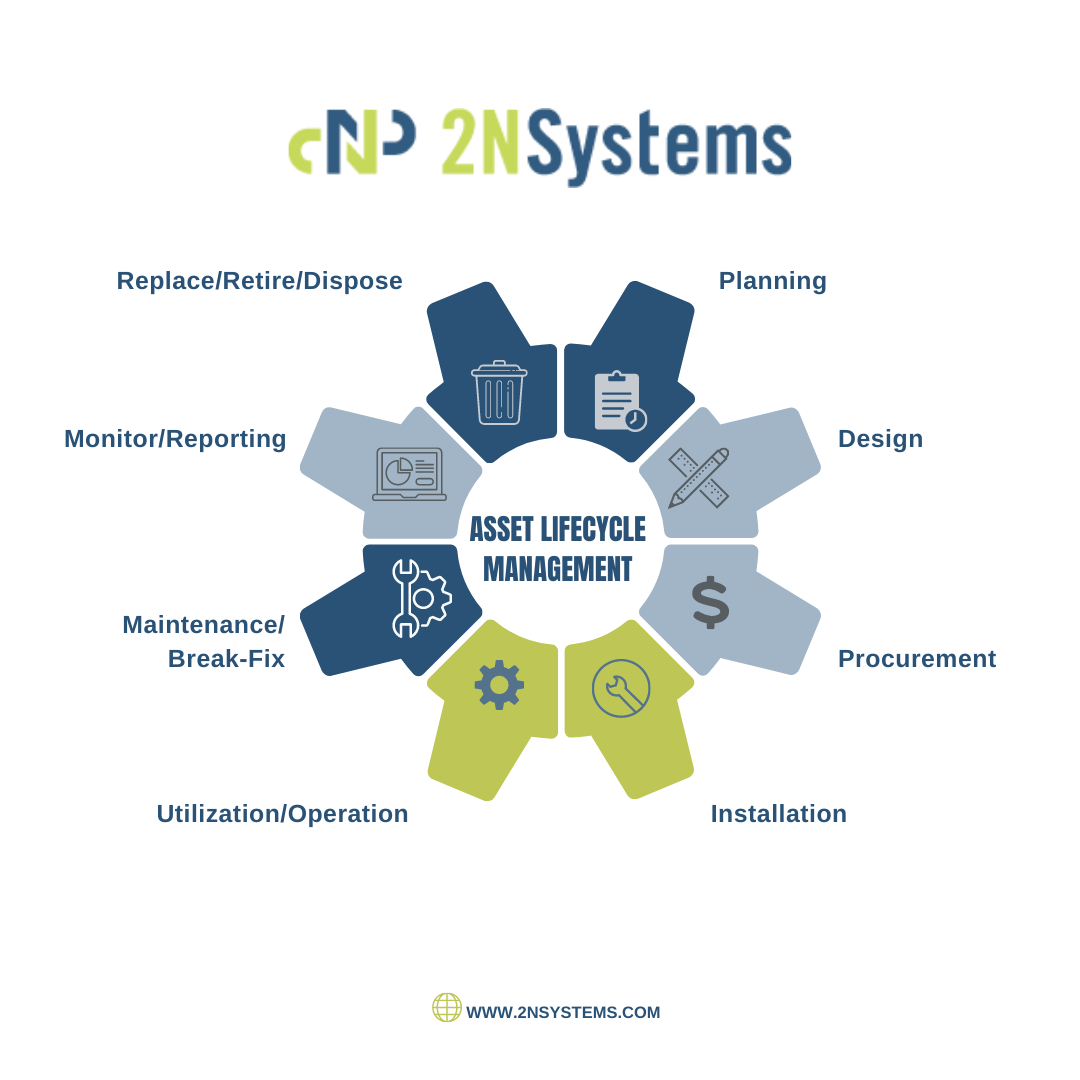Asset lifecycle management begins with “planning“.

The first step in the planning process is to assess current resources and equipment conditions. This may be followed by verifying whether there are resources available for replacement. The asset’s life cycle refers to the process of operating and maintaining the assets from installation to disposal. This practice involves calculation of future performance of an asset, or a group of assets, through asset analysis and maintenance strategies. Such assets in our industry include UPS systems, generators, cooling units, power distribution, software etc.
An example of what a building manager might do during the planning stage is provided below:
- A thorough evaluation of existing assets
- Securing access to the resources that are needed
- Identifying underperforming and excess assets
- Ensuring adequate maintenance of assets
- Estimating the costs of assets as well as funding for procurements.
Lifecycle planning can assist organizations in applying asset management principles to establish routine maintenance, break-fix, and replacement strategies that are in line with business objectives and/or financial goals. A well-defined lifecycle plan is as important as the assets themselves as business goals and objectives can frequently change. A lack of proper asset life cycle management increases the risk of unplanned outages. As a result, there could be an idle workforce and revenue losses. Additionally, assets age beyond their useful lives and become problematic, while both capital and operating costs exceed budgets.
Utilizing a company experienced in asset lifecycle management to help track and maintain these assets can often be an efficient use of money and time. This partnership will provide a level of support and expertise to help you confidently make informed decisions regarding an assets current state and control spending by understanding maintenance and replacement cost in advance.
As part of the planning stage, determining the existing state of equipment and the most cost-effective course of action is the 1st step. To prevent unplanned downtime, know where each asset resides within the lifecycle. This will also help to avoid unnecessary asset replacement costs. By managing your assets’ lifecycle, you can easily see which assets are high priorities for replacement and what those associated budgets look like.
Be sure to check back here soon for the next installment in our Asset Lifecycle Management series.
